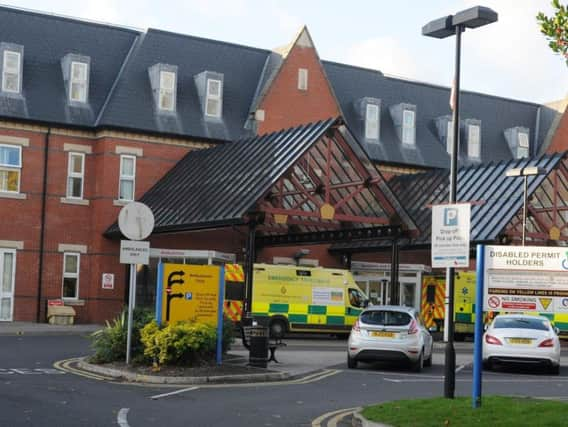17 HOURS - the long wait to be seen during A&E crisis


A report released by NHS England has shown that in December patients waited up to 10 hours for initial treatment and up to 17 hours in A&E waiting for and receiving medical attention.
The infirmary was under extra strain due to the closure of Chorley Hospital’s A&E department - which resulted in a 400 per cent increase in patients coming to the borough seeking treatment - but it partially reopened earlier this year.
Advertisement
Hide AdAdvertisement
Hide AdWigan MP Lisa Nandy praised the hard-working staff and called for changes to the NHS to stop the situation from worsening.
Ms Nandy said: “A&E waiting times across the country have rocketed in recent years. Huge cuts to social care, a costly and disruptive reorganisation of the NHS and growing pressures on GPs have left too many people waiting for too long.
“We’re lucky to have incredibly hard-working staff in Wigan who have helped our hospital cope better with these pressures than others in the region but without a drastic change of course from this government the situation will get worse. Jeremy Hunt has taken us back 20 years to the days when patients routinely spent hours on hospital trolleys and waited years for operations. We cannot allow this to continue.”
Based on the provisional data, 7,446 people attended A&E in December 2016, and the report also does not take into account those who attended for a “planned follow up” appointment or those where the attendance category was unknown.
Advertisement
Hide AdAdvertisement
Hide AdDecember was the worst month for A&E target times, only reaching 82.62 per cent of all patients being seen within four hours. The infirmary failed to meet the 95 per cent target every month in 2016.
As well as wait times, the figures shows the rate of re-admittance for patients within seven days, which at Wigan is 8.2 per cent, a better performance than the national average of 9.2 per cent.
Of all the 7,446 patients seen in December, 348 of them left before treatment and 609 had to return to the department within the week.
Duncan Armfield, deputy director of operations at Wrightington, Wigan and Leigh NHS Trust, said: “Patient care and safety is and will remain our uppermost priority. The December figures are a clear indication of the pressures the hospital was facing during the height of the winter pressures.
Advertisement
Hide AdAdvertisement
Hide Ad“The presence of outbreaks of norovirus and influenza compounded the situation towards the latter end of the month. This led to closed wards and several care/nursing homes closing their doors due to the infections.
“The closures hindered the safe discharge of some of our elderly and complex patients, resulting in them staying longer on our wards, which in turn affected the flow of patients and causing pressure to build in A&E.”